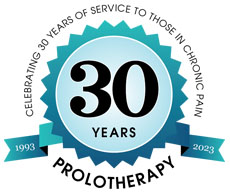By following the Hauser Diet® program, each person can be provided with an individualized healthy eating plan in order to obtain optimal health, wellness, energy, and appropriate weight. However, diet and food choices are not enough to help the patient in chronic pain. Sometimes the patient will be given the choice between conservative care treatments and surgery.
So we have patients who are looking for other options than joint replacement. However, some of these treatments offered can lead to more long-term joint damage? Corticosteroids, NSAIDs, and RICE (Rest, Ice, Compression, Elevation) are standard treatments for musculoskeletal pain included in this category.
Corticosteroids are given as injections or oral medications, which may temporarily reduce pain and inflammation. However, this can be problematic when the pain signal is turned off yet a person continues to engage in full sports and activities on an injured joint, accelerating joint damage. Additionally, cortisone itself is degenerative to tissue, including cartilage.
Non-steroidal anti-inflammatories (NSAIDs), such as ibuprofen, inhibit the body’s repair processes. NSAIDs are among the most commonly used drugs in the world for pain, yet have the potential for significant side effects to the liver, stomach, gastrointestinal tract and heart. Additionally, they have no beneficial effect on articular cartilage, rather, they accelerate osteoarthritis, the very disease for which they are most often used. Both cortisone injections and NSAIDs inhibit the healing process, making re-injury much more likely in the future.
Rest, ice, compression and elevation (RICE) have long been used in the treatment of sports injuries. However, these modalities hinder the natural inflammatory healing cascade. Inflammation boosts blood flow to the area as the body tries to repair the injury. RICE encourages stagnation of blood flow to the already blood-poor tissue structures, decreasing healing ability.
Treatments such as ultrasound, heat, acupuncture, and massage aid in the healing process by encouraging blood flow. However, if the injury has not healed after a few weeks, stronger treatments to repair the weakened tissue, such as regenerative injection therapy, may be the next step. Seeking regenerative treatments that offer healing at the source of injuries can enable a speedy return to normal activities without unnecessary long-term risks.
You can begin your research on regenerative injection therapies including Prolotherapy at our Caringmedical.com website.
Teoh LS, Eyles JP, Makovey J, Williams M, Kwoh CK, Hunter DJ. Observational study of the impact of an individualized multidisciplinary chronic care program for hip and knee osteoarthritis treatment on willingness for surgery. International journal of rheumatic diseases. 2016 Nov 1.



